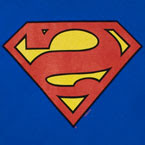So I guess it is no surprise that IDW would choose the Myriad Universe format for its first ‘crossover’
 with Pocket Books. Entitled The Last Generation, the five issue collection tells the story of what Jean-Luc Picard’s universe would be like had Captain Kirk not stopped the planned Klingon assassination of the Federation president in Star Trek VI. As you might imagine, it doesn’t turn out so well.
with Pocket Books. Entitled The Last Generation, the five issue collection tells the story of what Jean-Luc Picard’s universe would be like had Captain Kirk not stopped the planned Klingon assassination of the Federation president in Star Trek VI. As you might imagine, it doesn’t turn out so well.Klingons conquered Earth in the interim, and Will Riker and Geordi LaForge have somehow come across an android named Data and are trying to get him into Resistance hands while keeping him away from Klingon ones. Their cell is none other than that run by Jean-Luc Picard, a single ‘father’ for his nephew, Rene, after his brother was killed by Klingons. Everyone else is pretty much in the resistance cell too: Beverly Crusher, a battle hardened Wesley, Yar, O’Brien, etc. Even Ro Laren, though how a Bajoran made it into an Earth resistance cell against Klingon imperialism is never addressed. Though not necessarily a bad start, it seems like only a slight deviation from Yesterday’s Enterprise, where the Federation was about to fall to the Klingons rather than it already being the case.
Just before Riker and LaForge lose Data to the Klingons, Captain Sulu of Excelsior shows up to save him. Apparently he has a cloaking device and has been fighting the Klingons for seven decades even though his ship looks like it is in perfect condition. Data was apparently created to be able to detect errors in the timestream, and he has pinpointed the death that Kirk failed to prevent as the deciding factor that hey must risk everything to go back and fix. Thus the crux of the series relies on a plot device that has been well used before now, and the obligatory twist at the end makes little sense. (I know that character is insane, but he doesn’t seem to ever work in the stories in which he is used.)
There’s a lot not to like about the execution, especially the way Wesley is treated. He is just a teenager but a good fighter who looks up to Picard as a father except when he doesn’t. After his girlfriend is killed, we are treated to a completely unbelievable scene in which he blames Picard. Later he shaves his hair into a Mohawk and puts on warrior paint, convinces O’Brien and others that Picard is crazy and they should subvert his plan to go back in time and change history, and then screws everything up before being taught a lesson at the end.
While I can handle a slight derivation of an old plot, writer Andrew Steven Harris seems to have missed the whole point of Pocket’s series. Rather than taking characters we know from an alternate universe and have the
 m attempt to put right what once went wrong, the idea was to see how characters we know would have been different if history had gone a different direction. The six novels did this in different ways, but were about characters in their own universe, not in a changed one. By turning his whole story on trying to change what happened differently, Harris loses what made the whole concept so interesting and dooms his project to be written off as a rehash of a plot we’ve seen ten too many times. It reduces the emotion we might have for these characters because their entire history is treated as imaginary and derivative. And if Harris just had to go this way, why not complicate the issue a bit: sure Picard could change the past, but that would mean a universe where his nephew is dead because of a fire. Sure the life Rene has now isn’t ideal, but at least it’s a life.
m attempt to put right what once went wrong, the idea was to see how characters we know would have been different if history had gone a different direction. The six novels did this in different ways, but were about characters in their own universe, not in a changed one. By turning his whole story on trying to change what happened differently, Harris loses what made the whole concept so interesting and dooms his project to be written off as a rehash of a plot we’ve seen ten too many times. It reduces the emotion we might have for these characters because their entire history is treated as imaginary and derivative. And if Harris just had to go this way, why not complicate the issue a bit: sure Picard could change the past, but that would mean a universe where his nephew is dead because of a fire. Sure the life Rene has now isn’t ideal, but at least it’s a life.Old DC Star Trek artist Gordon Purcell pencils the series, and he is as good as he was back in the old days. The characters look remarkably like their actual counterparts, with the exception of Wesley who just didn’t really work for me. That said, the layouts are occasionally confusing, with important panel divisions being lost in the gutter. The series also had some creative cover designs, like a refashioning of the sixth movie poster as well as the reimagining of the X-Men ‘Days of Future Past’ cover that is shown here.
All in all, a disappointing execution of a story that seems to have been misconceived in the first place.

No comments:
Post a Comment